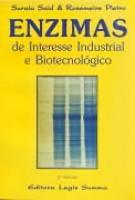Descrição
- Contents
- Preface
- Acknowledgments
- Chapter 1. Introduction
- Chapter 2. Particle Size Distributions
- 2.1 Frequency and count distributions
- 2.2 Mass and volume distributions
- 2.3 Cumulative mass and volume distributions
- 2.4 Other distribution functions
- 2.5 Summary of mean and median aerosol particle sizes
- Chapter 3. Motion of a Single Aerosol Particle in a Fluid
- 3.1 Drag force
- 3.2 Settling velocity
- 3.3 Drag force on very small particles
- 3.4 Brownian diffusion
- 3.5 Motion of particles relative to the fluid due to particle inertia
- 3.6 Similarity of particle motion: the concept of aerodynamic diameter
- 3.7 Effect of induced electrical charge
- 3.8 Space charge
- 3.9 Effect of high humidity on electrostatic charge
- Chapter 4. Particle Size Changes due to Evaporation or Condensation
- 4.1 Introduction
- 4.2 Water vapor concentration at an air–water interface
- 4.3 Effect of dissolved molecules on water vapor concentration at an air–water interface
- 4.4 Assumptions needed to develop simplified hygroscopic theory
- 4.5 Simplified theory of hygroscopic size changes for a single droplet: mass transfer rate
- 4.6 Simplified theory of hygroscopic size changes for a single droplet: heat transfer rate
- 4.7 Simplified theory of droplet growth or evaporation of a single droplet whose temperature is cons
- 4.8 Use of the constant temperature equation for variable temperature conditions and a single drople
- 4.9 Modifications to simplified theory for multiple droplets: two-way coupled effects
- 4.10 When are hygrosopic size changes negligible?
- 4.11 Effect of aerodynamic pressure and temperature changes on hygroscopic effects
- 4.12 Corrections to simplified theory for small droplets
- 4.13 Corrections to account for Stefan flow
- 4.14 Exact solution for Stefan flow
- 4.15 When can Stefan flow be neglected?
- Chapter 5. Introduction to the Respiratory Tract
- 5.1 Basic aspects of respiratory tract geometry
- 5.2 Breath volumes and flow rates
- Chapter 6. Fluid Dynamics in the Respiratory Tract
- 6.1 Incompressibility
- 6.2 Nondimensional analysis of the fluid equations
- 6.3 Secondary flow patterns
- 6.4 Reduction of turbulence by particle motion
- 6.5 Temperature and humidity in the respiratory tract
- 6.6 Interaction of air and mucus fluid motion
- Chapter 7. Particle Deposition in the Respiratory Tract
- 7.1 Sedimentation of particles in inclined circular tubes
- 7.2 Sedimentation in alveolated ducts
- 7.3 Deposition by impaction in the lung
- 7.4 Deposition in cylindrical tubes due to Brownian diffusion
- 7.5 Simultaneous sedimentation, impaction and diffusion
- 7.6 Deposition in the mouth and throat
- 7.7 Deposition models
- 7.8 Understanding the effect of parameter variations on deposition
- 7.9 Respiratory tract deposition
- 7.10 Targeting deposition at different regions of the respiratory tract
- 7.11 Deposition in diseased lungs
- 7.12 Effect of age on deposition
- 7.13 Conclusion
- Chapter 8. Jet Nebulizers
- 8.1 Basic nebulizer operation
- 8.2 The governing parameters for primary droplet formation
- 8.3 Linear stability of air flowing across water
- 8.4 Droplet sizes estimated from linear stability analysis
- 8.5 Primary droplet formation
- 8.6 Primary droplet breakup due to abrupt aerodynamic loading
- 8.7 Primary droplet breakup due to gradual aerodynamic loading
- 8.8 Empirical correlations
- 8.9 Droplet production by impaction on baffles
- 8.10 Degradation of drug due to impaction on baffles
- 8.11 Aerodynamic size selection of baffles
- 8.12 Cooling and concentration of nebulizer solutions
- 8.13 Nebulizer efficiency and output rate
- 8.14 Charge on droplets produced by jet nebulization
- 8.15 Summary
- Chapter 9. Dry Powder Inhalers
- 9.1 8asic aspects of dry powder inhalers
- 9.2 The origin of adhesion: van der Waals forces
- 9.3 van der Waals forces between actual pharmaceutical particles
- 9.4 Surface energy: a macroscopic view of adhesion
- 9.5 Effect of water capillary condensation on adhesion
- 9.6 Electrostatic forces
- 9.7 Powder entrainment by shear fluidization
- 9.8 Turbulent deaggregation of agglomerates
- 9.9 Particle detachment by mechanical acceleration: impaction and vibration
- 9.10 Concluding remarks
- Chapter 10. Metered Dose Propellant Inhalers
- 10.1 Propellant cavitation
- 10.2 Fluid dynamics in the expansion chamber and nozzle
- 10.3 Post-nozzle droplet breakup due to gradual aerodynamic loading
- 10.4 Post-nozzle droplet evaporation
- 10.5 Add-on devices
- 10.6 Concluding remarks
- Index




